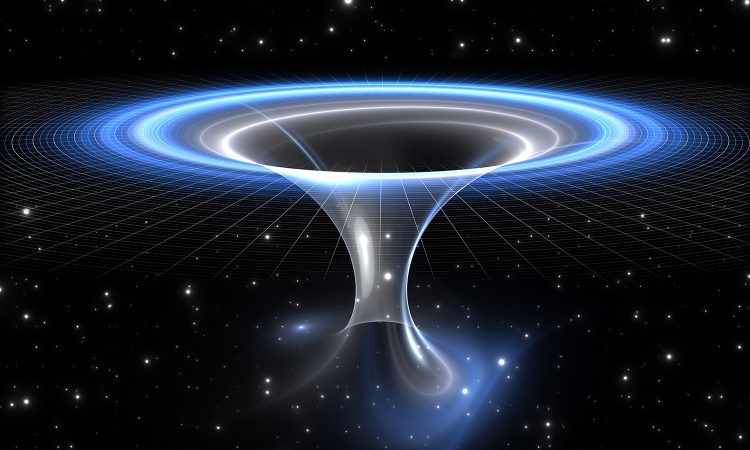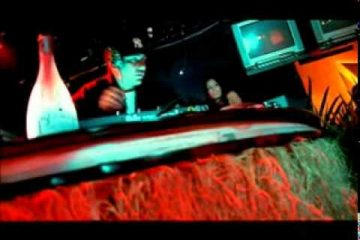As several respondents noted, we constantly travel through time–just forward, and all at the same rate. But seriously, time travel is more than mere fantasy, as noted by Gary T. Horowitz, a professor of physics at the University of California at Santa Barbara:
“Perhaps surprisingly, this turns out to be a subtle question. It is not obviously ruled out by our current laws of nature. Recent investigations into this question have provided some evidence that the answer is no, but it has not yet been proven to be impossible.”
Even the slight possibility of time travel exerts such fascination that many physicists continue to study not only whether it may be possible but also how one might do it.
One of the leading researchers in this area is William A. Hiscock, a professor of physics at Montana State University. Here are his thoughts on the matter:
“Is it possible to travel through time? To answer this question, we must be a bit more specific about what we mean by traveling through time. Discounting the everyday progression of time, the question can be divided into two parts: Is it possible, within a short time (less than a human life span), to travel into the distant future? And is it possible to travel into the past?
“Our current understanding of fundamental physics tells us that the answer to the first question is a definite yes, and to the second, maybe.
“The mechanism for traveling into the distant future is to use the time-dilation effect of Special Relativity, which states that a moving clock appears to tick more slowly the closer it approaches the speed of light. This effect, which has been overwhelmingly supported by experimental tests, applies to all types of clocks, including biological aging.
“If one were to depart from the earth in a spaceship that could accelerate continuously at a comfortable one g (an acceleration that would produce a force equal to the gravity at the earth’s surface), one would begin to approach the speed of light relative to the earth within about a year. As the ship continued to accelerate, it would come ever closer to the speed of light, and its clocks would appear to run at an ever slower rate relative to the earth. Under such circumstances, a round trip to the center of our galaxy and back to the earth–a distance of some 60,000 light-years–could be completed in only a little more than 40 years of ship time. Upon arriving back at the earth, the astronaut would be only 40 years older, while 60,000 years would have passed on the earth. (Note that there is no ‘twin paradox,’ because it is unambiguous that the space traveler has felt the constant acceleration for 40 years, while a hypothetical twin left behind on a spaceship circling the earth has not.)
“Such a trip would pose formidable engineering problems: the amount of energy required, even assuming a perfect conversion of mass into energy, is greater than a planetary mass. But nothing in the known laws of physics would prevent such a trip from occurring.
“Time travel into the past, which is what people usually mean by time travel, is a much more uncertain proposition. There are many solutions to Einstein’s equations of General Relativity that allow a person to follow a timeline that would result in her (or him) encountering herself–or her grandmother–at an earlier time. The problem is deciding whether these solutions represent situations that could occur in the real universe, or whether they are mere mathematical oddities incompatible with known physics. No experiment or observation has ever indicated that time travel is occurring in our universe. Much work has been done by theoretical physicists in the past decade to try to determine whether, in a universe that is initially without time travel, one can build a time machine–in other words, if it is possible to manipulate matter and the geometry of space-time in such a way as to create new paths that circle back in time.
“How could one build a time machine? The simplest way currently being discussed is to take a wormhole (a tunnel connecting spatially separated regions of space-time) and give one mouth of the wormhole a substantial velocity with respect to the other. Passage through the wormhole would then allow travel to the past.
“Easily said–but where does one obtain a wormhole? Although the theoretical properties of wormholes have been extensively studied over the past decade, little is known about how to form a macroscopic wormhole, large enough for a human or a spaceship to pass through. Some speculative theories of quantum gravity tell us that space-time has a complicated, foamlike structure of wormholes on the smallest scales–10^-33 centimeter, or a billion billion times smaller than an electron. Some physicists believe it may be possible to grab one of these truly microscopic wormholes and enlarge it to usable size, but at present these ideas are all very hypothetical.“Even if we had a wormhole, would nature allow us to convert it into a time machine? Stephen Hawking has formulated a “Chronology Protection Conjecture,” which states that the laws of nature prevent the creation of a time machine. At the moment, however, this is just a conjecture, not proven.
“Theoretical physicists have studied various aspects of physics to determine whether this law or that might protect chronology and forbid the building of a time machine. In all the searching, however, only one bit of physics has been found that might prohibit using a wormhole to travel through time. In 1982, Deborah A. Konkowski of the U.S. Naval Academy and I showed that the energy in the vacuum state of a massless quantized field (such as the photon) would grow without bound as a time machine is being turned on, effectively preventing it from being used. Later studies by Hawking and Kip S. Thorne of Caltech have shown that it is unclear whether the growing energy would change the geometry of space-time rapidly enough to stop the operation of the time machine. Recent work by Tsunefumi Tanaka of Montana State University and myself, along with independent research by David Boulware of the University of Washington, has shown that the energy in the vacuum state of a field having mass (such as the electron) does not grow to unbounded levels; this finding indicates there may be a way to engineer the particle physics to allow a time machine to work.
“Perhaps the biggest surprise of the work of the past decade is that it is not obvious that the laws of physics forbid time travel. It is increasingly clear that the question may not be settled until scientists develop an adequate theory of quantum gravity.”
John L. Friedman of the physics department at the University of Wisconsin at Milwaukee has also given this subject a great deal of consideration:
“Special relativity implies that people or clocks at rest (or not accelerating) age more quickly than partners traveling on round-trips in which one changes direction to return to one’s partner. In the world’s particle accelerators, this prediction is tested daily: Particles traveling in circles at nearly the speed of light decay more slowly than those at rest, and the decay time agrees with theory to the high precision of the measurements.
“Within the framework of Special Relativity, the fact that particles cannot move faster than light prevents one from returning after a high-speed trip to a time earlier than the time of departure. Once gravity is included, however, spacetime is curved, so there are solutions to the equations of General Relativity in which particles can travel in paths that take them back to earlier times. Other features of the geometries that solve the equations of General Relativity include gravitational lenses, gravitational waves and black holes; the dramatic explosion of discoveries in radio and X-ray astronomy during the past two decades has led to the observation of gravitational lenses and gravitational waves, as well as to compelling evidence for giant black holes in the centers of galaxies and stellar-sized black holes that arise from the collapse of dying stars. But there do not appear to be regions of spacetime that allow time travel, raising the fundamental question of what forbids them–or if they really are forbidden.
“A recent surprise is that one can circumvent the ‘grandfather paradox,’ the idea that it is logically inconsistent for particle paths to loop back to earlier times, because, for example, a granddaughter could go back in time to do away with her grandfather. For several simple physical systems, solutions to the equations of physics exist for any starting condition. In these model systems, something always intervenes to prevent inconsistency analogous to murdering one’s grandfather.
“Then why do there seem to be no time machines? Two different answers are consistent with our knowledge. The first is simply that the classical theory has a much broader set of solutions than the correct theory of quantum gravity. It is not implausible that causal structure enters in a fundamental way in quantum gravity and that classical spacetimes with time loops are spurious–in other words, that they do not approximate any states of the complete theory. A second possible answer is provided by recent results that go by the name chronology protection: One supposes that quantum gravity allows microscopic structures that violate causality, and one shows that the character of macroscopic matter forbids the existence of regions with macroscopically large time loops. To create a time machine would require negative energy, and quantum mechanics appears to allow only extremely small regions of negative energy. And the forces needed to create an ordinary-sized region with time loops appear to be extremely large.
“To summarize: It is very likely that the laws of physics rule out macroscopic time machines, but possible that spacetime is filled with microscopic time loops.





